What is Cord Tissue?
Like cord blood, expectant parents can save stem cells from their child’s umbilical cord tissue for use in medical transplants. Collection of the umbilical cord tissue can be performed easily and quickly at the same time that the cord blood is collected. The cord lining is the outermost layer of the umbilical cord that forms the connection between a baby and its mother. After a child is born, the umbilical cord is typically discarded as medical waste. Collected cord tissue can be stored successfully for several decades.
Your baby’s umbilical cord lining, or Wharton’s jelly, holds different stem cells. Where cord blood is rich in hematopoietic stem cells and also contains mesenchymal stem cells, cord tissue is richer in the mesenchymal stem cells and, to a lesser extent, epithelial stem cells.
Cord tissue is regenerative medicine
Researchers are breaking new ground with these cells, with applications which could prove to be beneficial in the future for the treatment of many common diseases and afflictions such as burns, diabetic wound care, heart disease, and a host of other indications. Treatments utilizing these cells are being referred to as the “treatment of the future” for their possible use treating conditions relating to muscle, cartilage and nerve cell regeneration.
More on cord tissue stem cells
Mesenchymal stem cells, also called bone marrow stromal stem cells, are typically found in bone marrow. Cord tissue is rich in this type of cell in cord blood. When transplanted into the body, mesenchymal cells can create the following:
- Bone cells: These cells can improve bone structure and reduce corrosion to damaged and brittle bones
- Cartilage cells: Like bone cells, cartilage cells repair damage and reduce further wear on cartilage
- Fat cells: Adipocytes, or fat cells, store energy as fat, which can be used at a later time if needed by the body
After birth, medical staff will remove blood and cut a large piece of the umbilical cord, which is stored along with cord blood in a facility. When banking both your baby’s cord blood and cord tissue stem cells, you increase your child’s chances of finding cures or treatments for both current and future unforeseen diseases and conditions.

